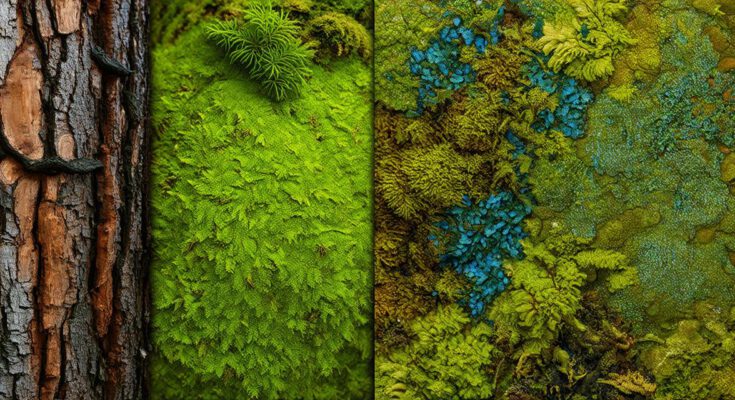Classification of Cryptogams
Cryptogams are classified as plants that lack specialized tissues for the transport of water and nutrients from the roots to the rest of the plant. They are further divided into three main groups: mosses, liverworts, and hornwarts.
Mosses
Mosses are the largest and most diverse group of cryptogams, with over 35,000 known species. They are characterized by their leaf-like structures called leaves, which are often covered in small hairs or scales to trap water droplets. Mosses can be found in a wide range of habitats, from forests and mountains to deserts and tundra.
Liverworts
Liverworts, on the other hand, are smaller and less diverse than mosses, with fewer than 5,000 known species. They are characterized by their flattened, leaf-like structures called leaves, which are often used for photosynthesis. Liverworts can be found in a variety of habitats, including forests, rocky areas, and damp soil.
Hornwarts
Hornwarts are the smallest and least diverse group of cryptogams, with fewer than 1,000 known species. They are characterized by their elongated, needle-like structures called leaves, which are often used for photosynthesis. Hornwarts can be found in a variety of habitats, including forests, mountains, and rocky areas.
Characteristics of Cryptogams
Cryptogams are characterized by several key features that set them apart from other plants. One of their most notable characteristics is their ability to photosynthesize in the presence of water. Unlike vascular plants, which require specialized tissues for this process, cryptogams can carry out photosynthesis using any available water source.
Another important characteristic of cryptogams is their small size and simple structures. These organisms are typically less than 1 cm in diameter and have only a few specialized cells for photosynthesis and other metabolic processes. This simplicity allows cryptogams to thrive in a wide range of environments, from nutrient-poor soil to extreme temperatures and high levels of radiation.
Cryptogams are also characterized by their ability to reproduce both sexually and asexually. Sexual reproduction involves the fusion of two haploid nuclei to form a diploid zygote, which then undergoes meiosis to produce haploid offspring. Asexual reproduction, on the other hand, involves the formation of new individuals through mitosis or fission.
Importance of Cryptogams in Ecosystems
Cryptogams play an important role in many ecosystems, serving as primary producers, decomposers, and substrates for other organisms. In forests and grasslands, mosses and liverworts provide habitat for a variety of insects, small animals, and fungi, while also helping to cycle nutrients through the soil. Hornwarts are particularly important in rocky areas and streamsides, where they can help stabilize banks and filter water pollutants.
Cryptogams are also an important food source for many other organisms. For example, many mosses and liverworts are consumed by small animals such as snails and insects, while some species of hornwarts are eaten by fish and birds. Additionally, cryptogams provide shelter and protection for a variety of organisms, including insects, spiders, and small mammals.
FAQs
1. What is the difference between mosses, liverworts, and hornwarts?
Mosses are characterized by their leaf-like structures, while liverworts have flattened, leaf-like structures. Hornwarts have elongated, needle-like structures.
2. Can cryptogams photosynthesize in water?
Yes, unlike vascular plants, cryptogams can carry out photosynthesis using any available water source.
3. What is the importance of cryptogams in ecosystems?
Cryptogams provide habitat for a variety of organisms, cycle nutrients through the soil, and help stabilize banks and filter pollutants in streamsides. They are also an important food source for many other organisms and play a role in the decomposition and recycling of nutrients in ecosystems.



